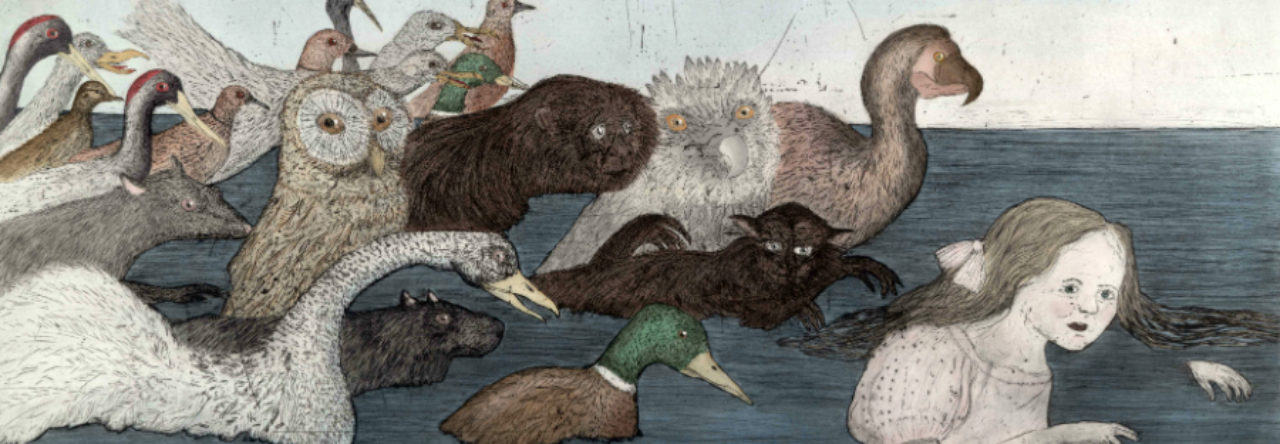Challenging the heterosexist confines of representation
lit/cult, sem, 2, Gender MA, ANG-MA-SZ13 MA Thesis-related seminar
In this thesis related seminar designed for second year MA students specialised in gender studies we shall interpret the cultural construction of identity in terms of enworlded, embodied discursive performances, and explore how ideologically prescribed narratives are organised by the hegemonic logic of heterosexual reproductive masterplot of “family romance”, and how subversive feminist counter-narrative practices – ranging from female gothic, to feminist metafiction, and gender- and genre bending transmedia storytelling – may challenge ready-made representational confines. Our aim is to discover, along the lines of Judith Roof’s feminist narratological activist agenda, how sexuality and narrative can be disentangled to reclaim voices for the silenced othered, and alter oppressive socio-political practices. Grading is based on classroom activity, reading journals, presentations, and a final essay.
Susan Lanser. “Gender and Narrative.” The Living Handbook of Narratology, 2013.
Susan Lanser. “Toward a Feminist Narratology” Style. 1986.
Susan Lanser. “Toward a Queerer, and More Feminist Narratology” in Eds. Warhol and Lanser. Narrative Theory Unbound. Queer and Feminist Interventions. Ohio UP, 2015.
Judith Roof. “Introduction” Come as You Are. Sexuality and Narrative. Columbia UP, 1996.
Kérchy Anna. A feminista narratológia dilemmái és a korporeális narratológia lehetőségei Új elméletek a narratológiában. Ed. Erzsébet Szabó. Szeged: Grimm, 2010.
Ato Quayson. “Aesthetic nervousness,” David Mitchell, Sharon Snyder. “Narrative Prosthesis,” Margaret Price. “Defining Mental Disability” in Lennard J. Davis (ed.)-The Disability Studies Reader-Routledge (2014).
Jody Norton. “Transchildren and the Discipline of Children’s Literature” in Over the Rainbow. Queer Children’s and YA Literature. Eds. Kenneth B Kidd and Ann Abate. U of Michigan P, 2011,
Bacchilega and Rieder. “Mixing it Up. Generic Complexity and Gender Ideology in 21st Century Fairy-Tale Film” in Fairy Tale Films. Visions of Ambiguity. Eds. Pauline Greenhill and Sidney Eve Matrix. Utah State UP, 2010. 23-42.
Diana Wallace. „The Haunting Idea. Female Gothic Metaphors and Feminist Theory.” in Wallace and Smith eds. The_Female_Gothic: New_Directions Palgrave Macmillan, 2009. 26-42.
Barbara Creed. “Medusa’s Head” /“Medusa’s Gaze” in The Monstrous Feminine. Routledge, 1993.
Judith Halberstam. “Parasites and Perverts_An Introduction to Gothic Monstrosity” Skin Shows. Gothic Horror and the Technology of Monsters. Duke UP, 1995. 1-28.
Elspeth Probyn. “Writing Shame” in The Affect Theory Reader. Duke UP, 2010.
Margrit Shildrick and Janet Price. “ Vital Signs. Texts, Bodies, Biomedicine.” in Vital Signs. Feminist Reconfigurations of the Bio/logical Body. Edinburgh UP, 1998.
Paul Aantze. “Telling Stories. Making Selves: Memory and Identity in Multiple Personality Disorder” in Tense Past. Cultural Essays in Trauma and Memory. Eds. Paul Aantze and Michael Lambek. Routledge,
Judith Halberstam. “Animating Revolt, Revolting Animation”. The Queer_Art_of_Failure. Duke UP, 2011.
Judith Halberstam. “Queer Temporality and Postmodern Geographies” In a Queer Time and Place_ Transgender Bodies, Subcultural Lives. NY UP, 2005
Teresa de Lauretis. “Desire in Narrative” in Alice Doesn’t. Feminism, Semiotics, Cinema, 1984.
Ursula K Le Guin. The Left Hand of Darkness

